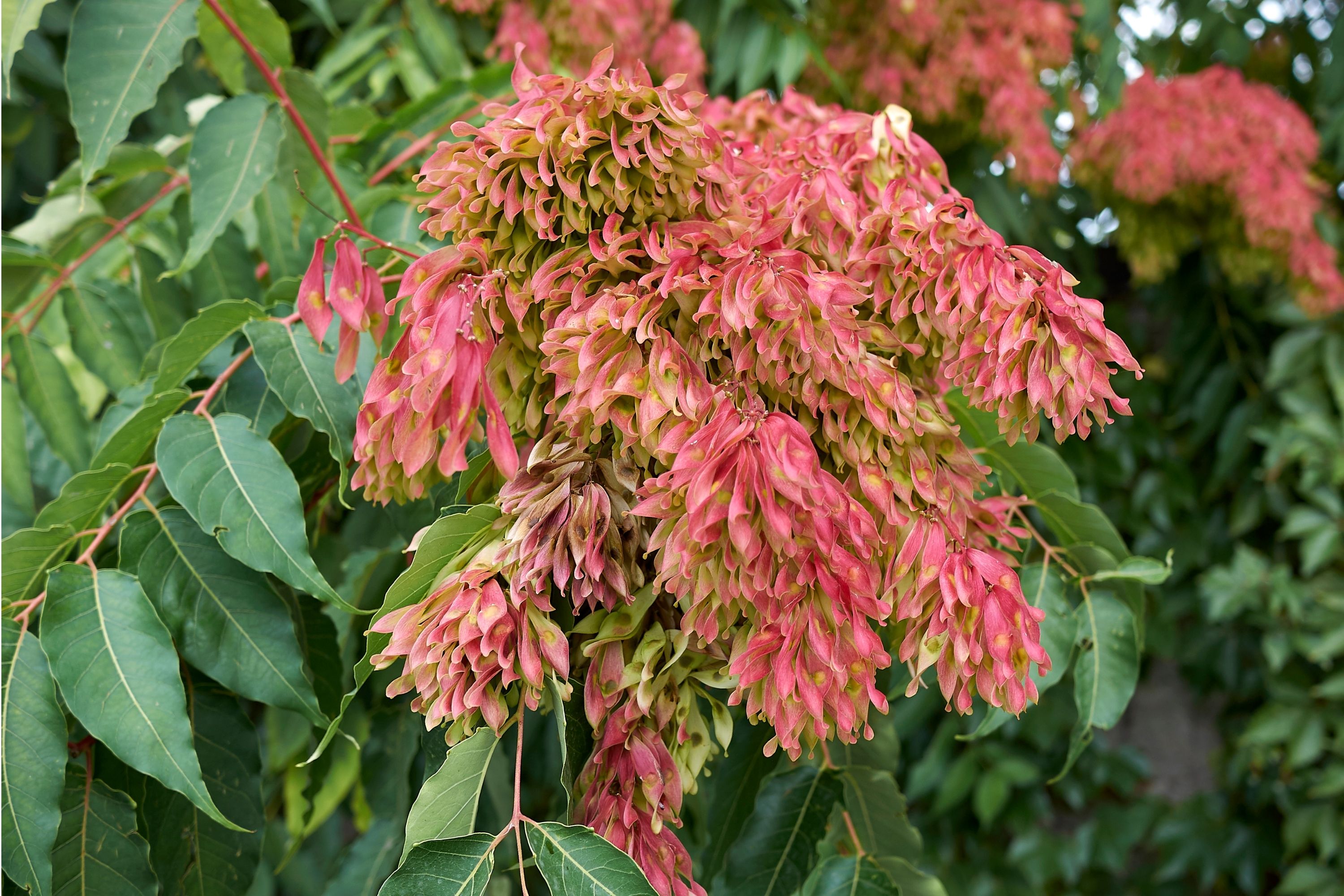Tree of Heaven
(Ailanthus altissima)

Description
Ailanthus altissima, commonly known as Tree of Heaven, is a fast-growing deciduous tree species that is native to China and Taiwan. The species was introduced to North America in the 1700s as an ornamental plant and later spread rapidly throughout the continent. It is now considered an invasive species in many areas and is known for its ability to grow in a variety of conditions and outcompete native plant species. In this article, we will explore the characteristics of Ailanthus altissima, its ecology and distribution, and its impact on the environment. Description Ailanthus altissima can grow up to 80 feet (24 meters) tall, with a trunk diameter of up to 6 feet (1.8 meters). The tree has smooth, gray bark, and its leaves are large and compound, with 10 to 41 leaflets that are lance-shaped and 2 to 5 inches (5 to 13 cm) long. The leaflets have a distinct odor when crushed, which is often described as similar to burnt peanut butter or rancid cashews. The tree produces clusters of small, yellow-green flowers in the spring, followed by winged seeds that are dispersed by the wind. The seeds can remain viable for up to a year and can be transported long distances by wind, water, and animals. Ecology and Distribution Ailanthus altissima is a highly adaptable species that can grow in a wide range of conditions, from full sun to partial shade and in a variety of soil types. The species is tolerant of drought, heat, and pollution and can thrive in urban and suburban environments. The tree is native to China and Taiwan but has been introduced to many parts of the world, including North America, Europe, and Africa. In North America, the species is most commonly found in the eastern United States, from Maine to Florida and as far west as Texas and Nebraska. Impact on the Environment Ailanthus altissima is considered an invasive species in many areas, particularly in urban and suburban environments. The tree is known for its ability to grow quickly and outcompete native plant species, often forming dense stands that can have negative impacts on biodiversity. The tree also has a unique ability to produce allelopathic compounds, chemicals that can inhibit the growth of other plants. These compounds are released into the soil through the tree's roots and can persist for several years, creating an inhospitable environment for other plant species. In addition to its impact on biodiversity, Ailanthus altissima can also have negative impacts on human health. The tree's sap contains a chemical called quassin, which can cause skin irritation and allergic reactions in some people. Control and Management Controlling Ailanthus altissima can be challenging due to its ability to resprout from its root system, even after being cut down or treated with herbicides. However, a combination of mechanical and chemical control methods can be effective in reducing the species' spread and impact. Mechanical control methods include cutting down the tree and removing its root system, which can be difficult and time-consuming. Chemical control methods include the use of herbicides, such as glyphosate, which can be applied directly to the tree's foliage or injected into its trunk. Prevention is also an important aspect of controlling Ailanthus altissima. Avoid planting the species in landscaping or restoration projects, and be sure to remove any seedlings that appear in natural areas. Conclusion Ailanthus altissima, or Tree of Heaven, is a fast-growing deciduous tree species that is native to China and Taiwan but has become an invasive species in many areas of the world.
Taxonomic tree:







